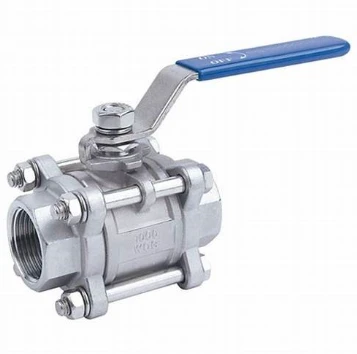50mm Butterfly Valve Specifications and Applications for Various Industries
Understanding the 50mm Butterfly Valve A Versatile Fluid Control Solution
The 50mm butterfly valve is an essential component in various fluid management systems due to its simplicity, efficiency, and versatility. Butterfly valves are widely recognized for their compact design and are commonly used in industries such as plumbing, food and beverage processing, pharmaceuticals, and water treatment. This article will explore the key features, advantages, applications, and maintenance considerations associated with the 50mm butterfly valve.
Key Features
One of the most significant characteristics of a butterfly valve is its operation mechanism, which employs a rotating disk to control the flow of fluid. In the case of a 50mm butterfly valve, the disk is typically positioned at the center of the valve body. When the valve is opened, the disk rotates 90 degrees, allowing fluid to pass through unobstructed. Conversely, when closed, the disk aligns perpendicular to the flow, effectively stopping it. This straightforward design allows for rapid opening and closing, making the butterfly valve an excellent choice for applications requiring quick and precise flow control.
The 50mm size indicates the nominal diameter of the valve, making it suitable for use in piping systems with equivalent diameter. Made from materials like stainless steel, PVC, or cast iron, these valves can withstand various pressures and temperatures, depending on the specific material used. Additionally, many butterfly valves come with various sealing options, such as rubber or Teflon, to ensure effective sealing and prevent leaks.
Advantages
The advantages of using a 50mm butterfly valve are numerous. Firstly, their lightweight construction compared to other valve types, such as gate or globe valves, makes them easier to handle and install. This feature is particularly beneficial in large-scale installations where weight can be a concern.
Secondly, butterfly valves offer excellent flow control. They can be operated easily and quickly, providing operators precise control over fluid flow. This makes them ideal for applications where rapid flow adjustments are necessary.
50mm butterfly valve

Moreover, with a lower pressure drop during operation, 50mm butterfly valves contribute to improved energy efficiency. This is particularly relevant in systems where minimizing energy costs is crucial to overall operating expenditures.
Applications
The applications of the 50mm butterfly valve are vast. In the water treatment industry, it regulates the flow of water through various treatment processes. In HVAC systems, these valves control airflow in ductwork, ensuring accurate temperature regulation. Similarly, in the food and beverage sector, they help maintain hygiene and prevent contamination, as they can be easily cleaned and sanitized.
Furthermore, in chemical processing, the ability to manage corrosive and hazardous materials makes the butterfly valve a reliable choice. It is used in mixing tanks, pipelines, and other critical areas requiring precise flow control and safety.
Maintenance Considerations
While butterfly valves are generally low-maintenance, regular inspection is essential to ensure their longevity and reliability. Operators should check for leaks, proper seal integrity, and the condition of the actuator mechanism. Lubricating movable parts and ensuring that the valve operates smoothly are also crucial maintenance practices.
In conclusion, the 50mm butterfly valve is a vital component in fluid control systems across various industries. Its design, coupled with numerous advantages, makes it a preferred choice for many applications. By understanding its features, advantages, and maintenance requirements, operators can effectively integrate this valve into their fluid management systems, ensuring operational efficiency and effectiveness. Whether it’s for a residential plumbing project or a large industrial application, the 50mm butterfly valve stands out as a reliable solution for managing fluid flow.
-
The Key to Fluid Control: Exploring the Advantages of Ball Valves in Industrial SystemsNewsJul.09,2025
-
The Versatile World of 1, 2, and 3 Piece Ball ValvesNewsJul.09,2025
-
Stainless Steel Ball Valves: The Ideal Choice for Efficient Flow ControlNewsJul.09,2025
-
Optimizing Fluid Control with Ball Float ValvesNewsJul.09,2025
-
Manual Gate Valves: Essential for Control and EfficiencyNewsJul.09,2025
-
Everything You Need to Know About Butterfly ValvesNewsJul.09,2025
-
The Versatility of Wafer Type Butterfly ValvesNewsJul.08,2025




